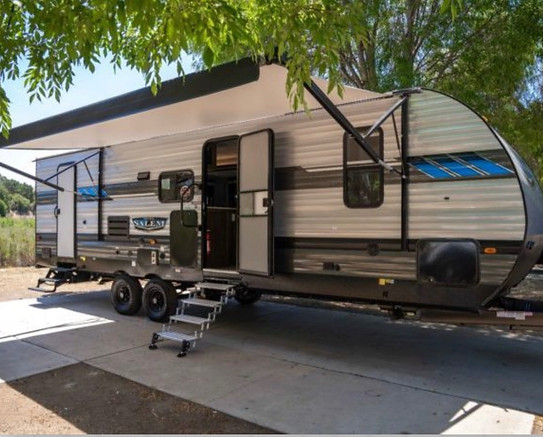
Rent Manager is a comprehensive property management solution. It allows users to automate and simplify many tasks including maintenance, billing, and communications. These features are coupled with a tenant portal that lets prospective tenants view the property, create maintenance requests, and review lease applications online.
It is compatible with both Mac and Windows computers. It can also be accessed as a service via the internet. This allows property managers to access the software from anywhere in the world, regardless of whether they are at work or on the move. The software also offers a free trial, multiple pricing options, and an option to purchase additional software.
It is possible to partner with over 200 companies. This makes it easy to find the perfect solution for you business. You have three options: the basic, plus, or premium plan. Each plan comes with different features. To get the most out of the software, you should opt for the Premium package.

Rent Manager comes with a website builder that allows you to create professional-looking websites. This allows you list vacant units to generate more income. Another feature is electronic payments. This feature allows you to send e checks to your tenants. Your tenants can then pay their rent via email.
The Tenant Portal is another useful feature. It allows you to view your tenant's activities, as well as perform background checks. The tenant portal can be accessed on desktop, iPad, or iPhone. Additionally, the app allows you to manage work orders and create maintenance tickets.
The system allows you to import data directly from other programs. This includes the ability to generate financial reports, as well as an automated account payable and receivable system. The software is capable of handling almost any task that a property manager can throw at it.
Rent Manager partner program Zego might be an option if you are interested in it. Together, they streamline the process of distributing landlord insurance programs. Rent Manager is also their preferred partner in utility management.

Additional features include the ability create and print custom reports. An invoice can be created for a tenant listing all services that they have ordered. You can also create an individual chart that displays important dates. A rent reminder can be created in the same way.
Overall, Rent Manager is a streamlined property management tool that helps you maximize your revenue cycle. Whether you are a small property manager or a large real estate management firm, you can make your life easier by incorporating this system into your daily operations. Rent Manager gives you a wide variety of support options to make your job easier.
Rent Manager software can be purchased in two different versions, the Basic or the Plus. Both versions are affordable. The Basic plan is priced at a meager $1 per unit, while the Plus plan costs $2.25. However, if you're on a tight budget, you can always opt for the Free Package, which is good for 10 properties.
FAQ
How many hours does it normally take to complete a typical DIY project?
An average DIY project takes between two and four hours. The difficulty and complexity of the project will affect how long it takes.
What happens if a handyman causes harm and I'm not satisfied with his work?
Notify him immediately if something goes wrong with the project. It is a good idea to keep a detailed log and include photographs. Next, contact your insurance company and file for a claim.
What are the most popular handyman repairs?
Handymen often repair roofs, windows and doors, doors, gutters. Decks, fences and sheds are all common repairs. When it comes to building or home improvement projects that cannot be performed by DIY homeowners, handymen can help with carpentry, plumbing, painting, drywall installation, landscaping, concrete work, fence construction, decking, tiling, and more.
Do I need to pay a handyman per hour or per project?
It all comes down to personal preference. Some prefer to pay their handyman by the hour. This allows them to see exactly what they charge. Others prefer to pay for each completed project since they may have multiple jobs simultaneously. Either way is fine.
What does the average handyman charge an hour?
Handyman fees range from $50 to $75 per hour. Most have been doing this for years. They spend around 10 hours on average working for any given job. They are well-known and do not need advertising.
They tend to specialize and develop customer relationships over time.
Their key difference from other contractors is their quickness, reliability, and affordability.
Most people have at least two or three of these guys that they can trust enough to call for help when they need it.
Some are so good they have their own business.
How often should I use a handyman for my job?
It all depends upon the nature of your job. If you are looking for a quick fix, like installing a lightbulb, you may only need one handyman per week. For large-scale remodeling projects, you might need to hire several handymen.
Statistics
- Mila keeps a commission of 20% for each completed service performed by Friends and charges various service fees regarding work done by Pros. (appjobs.com)
- An estimate was that in 2003, the market for home maintenance and repair spending was up 14% 2001 to 2003. (en.wikipedia.org)
- According to the U.S. Bureau of Labor Statistics, in May 2020, there are 1,357,630 handymen employed in the U.S.. (angi.com)
- With a strong housing market, the handyman and general maintenance worker industry are expected to grow by nearly 10% in the next decade. (housecallpro.com)
- “Once the pandemic hit, that number fell to about 20%.” (inquirer.com)
External Links
How To
How to Install a Receptacle Box
Follow the instructions of your local building inspector before installing any type electrical outlet. This includes ensuring that the wiring is installed correctly and that there are no problems associated with water damage or existing fire hazards.
Most boxes are prewired and have four wires from the breaker panel. The box's two black wires are connected to the first screw. The red and white wires connect to the second screw. When connecting wires together, you must ensure that the wire nuts and wire wraps are not used. If you do this, it will be difficult for the wires not to stick in their place once they are tightened. They should be loose enough for them to move but not too tight that they pull out of their holes.
You might want to add a receptacle to an existing box. You'll need to take off the top of your existing metal box, and then add a cover plate. Once the hole is made for the new receptacle and the cover plate is attached, you would need to connect all of the wires to the new receptacle.
You might be able to replace your existing light switches with modern ones by yourself. First, remove the switch from its mount. You should then disconnect all wires from the switch. These wires include power going into the switch itself and the ones that supply electricity to the lights in the room where the switch is located. Once you have disconnected all of it, you can begin the replacement process.
After removing the switch, measure the distance to the wall and mark the location with a permanent marking pen. Once this is done, you will need to determine if your new switch should be mounted higher than or lower than the floor. Depending on the height at which the switch will be mounted, you will either need to drill a hole for the mounting bracket or attach the switch directly to the wall using drywall anchors.
After you have taken measurements and marked the locations, you can begin the project. You will need to remove the drywall from the area where the switch will go. To ensure that the cable is not accidentally cut inside the wall, you should leave about 8 inches space between each stud. Next, attach the mounting brackets to the new switch. You will also need to attach the cables to the switch before tightening it down onto the mounting plates. After the switch is installed properly, it will be necessary to turn on the power again and to test the device to make sure it works correctly.